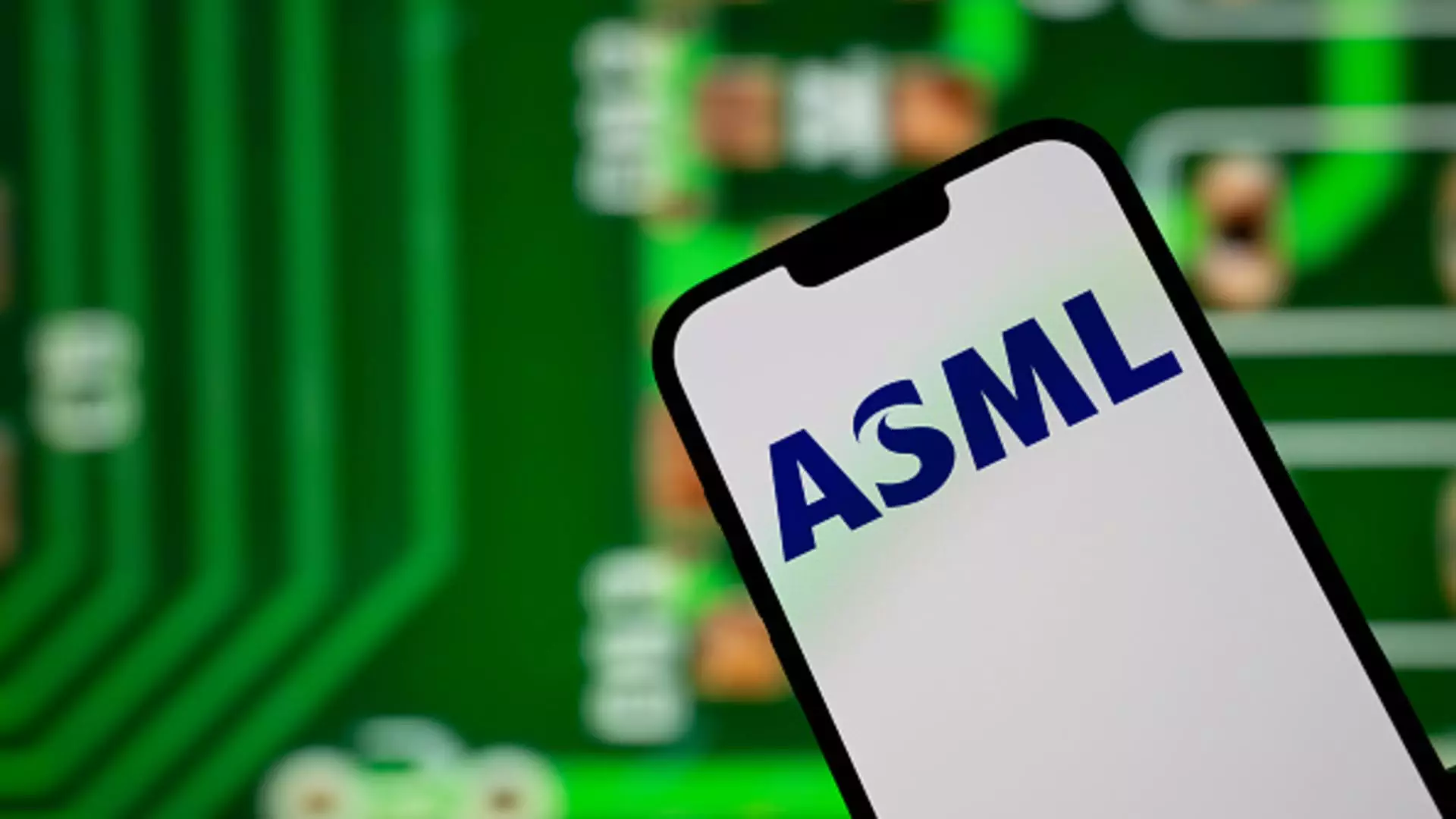In an industry often heralded for its relentless growth and innovation, ASML, the Dutch giant in semiconductor equipment manufacturing, has faced a stark reality check. The company recently disclosed its quarterly performance, which fell short of analysts’ estimates. With net sales of €7.74 billion against an expected €7.8 billion and net profit slightly beating forecasts at €2.36 billion, the overall sentiment around its earnings report has not been encouraging. The anticipated orders and bookings data has raised alarms, indicating that ASML might be grappling with complexities beyond its control.
Call for Caution Amid Uncertain Waters
ASML’s CEO, Christophe Fouquet, has been forthright about the challenges ahead, describing the demand outlook as “strong” because of the acceleration towards artificial intelligence. Yet, his words carry an undertone of hesitancy. The mention of “uncertainty with some of our customers” has significant implications for the company’s forecast. A shift toward the lower end of its 2025 revenue guidance—predicted to range from €30 billion to €35 billion—indicates that external economic factors are taking their toll. This uncertainty, primarily rooted in U.S. trade policies, points to a more precarious environment for companies relying on global supply chains.
The Tariff Tidal Wave
The semiconductor industry is currently reeling from the specter of tariffs, which are generating widespread confusion. This was exemplified when U.S. administration comments seemed to undermine prior concessions regarding exemptions for essential electronic components. The ambiguity surrounding tariffs—once considered temporarily lifted—has now transformed into a complex riddle involving national security investigations by the U.S. Commerce Department. Such swirling uncertainty creates a precarious business atmosphere not only for ASML but for the entire semiconductor supply chain.
Impact on Global Supply Chains
The ramifications of these trade restrictions extend well beyond ASML, with global chip stocks reflecting the panic that has engulfed investors. The upcoming directives could significantly affect chip manufacturers like TSMC, a critical customer for ASML. Analysts, including Ben Barringer from Quilter Cheviot, point out that while it’s premature to gauge the full impact of tariffs on ASML, the vulnerability of its customer base remains a significant concern. Companies like Nvidia have already signaled distress, projecting a staggering $5.5 billion quarterly charge influenced by U.S. restrictions. This trajectory of upheaval sends shockwaves through investors focused on semiconductor resilience.
Artificial Intelligence as a Double-Edged Sword
Fouquet’s emphasis on AI as a key driver for sales raises the question of whether reliance on such technologies can offset the burgeoning fears surrounding trade barriers. AI may indeed propel semiconductor demand, but it simultaneously introduces a new set of challenges. As ASML seeks to pivot towards AI-driven growth, it must navigate vast market uncertainties that can erode confidence among investors and clients alike. The paradox of depending on a technology that requires robust supply chains—which tariffs threaten—presents a challenging gamble.
Recalibrating Market Expectations
Given the failed expectations for bookings—that amounted to €3.94 billion against a predicted €4.89 billion—it’s clear that a recalibration of market expectations is necessary. While the persistent bullishness around AI may create a façade of stability, the underlying dynamics suggest an imminent confrontation with the realities of trade policies and assets intensifying throughout the industry.
A Call for Strategic Agility
In light of the turbulent landscape, ASML and similar entities must prioritize strategic agility. Crafting innovative solutions that can mitigate the impacts of tariffs while strengthening relationships with global customers may prove quintessential. The semiconductor sector cannot afford to be reactionary; it needs proactive strategies to navigate through challenges that arise from both policy shifts and market demand fluctuations.
In a time of unpredictability, the strength of a company like ASML will depend on its ability to maneuver through these obstacles creatively and effectively. The repercussions of today’s tariff policies could rekindle the urgency to expand into markets unencumbered by such restrictions, but it’s a gamble on a high-stakes global chessboard. As the dust settles from these newfound challenges, only time will reveal the trajectory ahead for ASML and the semiconductor landscape at large.

